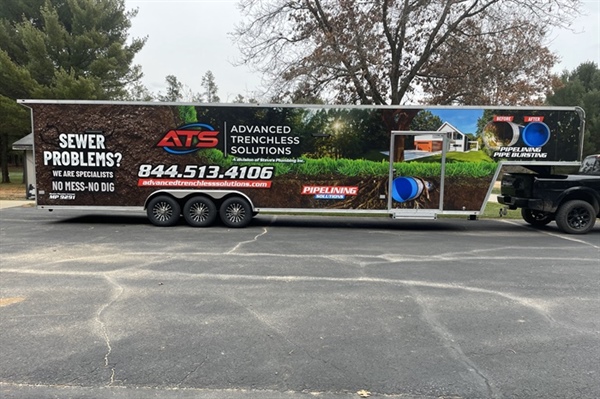Innovations in Trenchless Technology Most Applicable to Rural Areas Near Kenosha

Rural communities around Kenosha face unique infrastructure challenges, from aging water and sewer lines beneath gravel roads to limited access for heavy excavation equipment. Soil variability, frost heave cycles and high groundwater tables increase risks of traditional open-cut repairs.
Advances in trenchless methods such as pipe lining have brought no-dig rehabilitation techniques to these areas, minimizing disturbance to agricultural land and road surfaces while restoring subsurface pipeline integrity.
This blog explores five critical questions:
Which trenchless solutions are best suited for rural infrastructure needs?
How do geographic and demographic factors influence trenchless method choice?
Are there cost-effective innovations for small communities?
How can trenchless technology aid in water conservation in rural areas?
What training do local technicians need to implement these innovations?
Top Trenchless Sewer & Water Line Solutions for Rural Infrastructure
Rural infrastructure often consists of aging cast iron or clay pipelines running beneath agricultural land and low-traffic gravel roads. Traditional open-cut repairs disrupt farm operations and require road closures that can isolate communities.
Trenchless solutions overcome these challenges by rehabilitating or replacing pipelines with minimal surface disturbance, preserving farmland, and maintaining access for local residents. One such method is cured-in-place pipe (CIPP) lining, which restores the structural integrity of existing sewer and water mains.
Another option is horizontal directional drilling (HDD) for new water main installations, allowing precise installation beneath obstacles such as fences, driveways, and wetlands.
Slip lining also provides a resilient new carrier pipe inside an existing host pipeline, offering improved flow capacity with limited excavation.
For many rural projects, CIPP lining stands out for its cost-effectiveness and rapid installation. The process inverts or pulls a resin-saturated felt tube into the host pipe and cures it in place, creating a seamless, corrosion-resistant liner that can extend pipeline life by decades.
Influence of Geographic & Demographic Factors on Trenchless Method Selection
Soil composition, groundwater levels, and seasonal frost cycles greatly influence trenchless method suitability. Cohesive clay soils may require pre-grouting or pilot drilling with HDD to navigate through dense strata, while sandy or unstable soils favor microtunneling under controlled pressure.
Topography and land use patterns, such as proximity to water bodies or crop fields, dictate access and equipment staging. Demographic factors—like community size and budget constraints—shape decisions, as smaller populations may prefer methods with lower mobilization costs and shorter project durations.
Where existing pipes cannot accommodate liners due to severe defects or collapses, pipe bursting offers simultaneous replacement by fracturing the host pipeline and pulling in a new high-density polyethylene pipe. This approach suits rural runs under narrow roadways and agricultural fields, minimizing restoration costs through pipe bursting.
Cost-Effective Trenchless Innovations for Small Rural Communities
Small communities often operate under strict budget pressures, prompting the adoption of modular trenchless technologies. Portable UV-curing systems enable onsite liner curing without steam or hot water, reducing equipment rental fees and personnel requirements.
Bullet water line installations—a process that propels a hydraulic bullet along with polyethylene pipe—allows service line replacements across short property runs with minimal surface disturbance. These low-impact techniques eliminate major roadwork and keep restoration costs down.
Sectional slip lining kits tailored for 6- to 12-inch pipelines provide cost-effective rehabilitation in discrete segments, matching replacement to localized defects. Combined with financing options and manufacturer warranties, these innovations deliver reliable performance for small municipal systems.
Using Trenchless Technology to Enhance Water Conservation in Rural Areas
Leaky distribution pipes account for significant water loss in rural networks. Trenchless rehabilitation methods seal cracked joints and restore seamless pipe interiors, reducing non-revenue water and lowering pumping and treatment costs.
CIPP liners form impermeable barriers that prevent infiltration of groundwater into sewer mains and exfiltration of potable water into surrounding soils. This improves system hydraulics and conserves treated water, critical for drought-prone or resource-limited regions.
Integrating advanced leak-detection sensors during trenchless installations enables ongoing monitoring without repeated excavation. Data feeds can pinpoint small leaks early, preserving water resources and extending pipeline service life.
Essential Training for Local Technicians in Trenchless Technologies
Local technicians require specialized training to implement trenchless methods safely and effectively. Industry-standard certifications—such as NASSCO’s PACP and LACP programs—ensure proficiency in pipeline assessment and condition coding.
Equipment vendors and lining manufacturers offer hands-on workshops covering CIPP, pipe bursting, and HDD operations. These courses emphasize best practices for resin handling, curing parameters, and bore path management, reducing the risk of installation defects.
Many rural operators partner with Advanced Trenchless Solutions for tailored training programs. These sessions include field demonstrations, on-site mentoring, and safety protocols, equipping technicians to maintain long-term system performance.
Partner With Advanced Trenchless Solutions for Rural Infrastructure Success
Advanced Trenchless Solutions brings decades of experience in CIPP lining, pipe bursting, HDD, and rotary drilling to rural Kenosha-area projects. Whether you need to rehabilitate aging sewer lines, install new water mains, reduce water loss, or train your crew, our team delivers minimal-disruption solutions backed by warranties and financing options.
Call us today at 844.513.4106 or visit our office at 1138 6th Street South, Wisconsin Rapids, WI 54494. Schedule a consultation through our contact us page to discuss how we can support your community’s infrastructure goals.